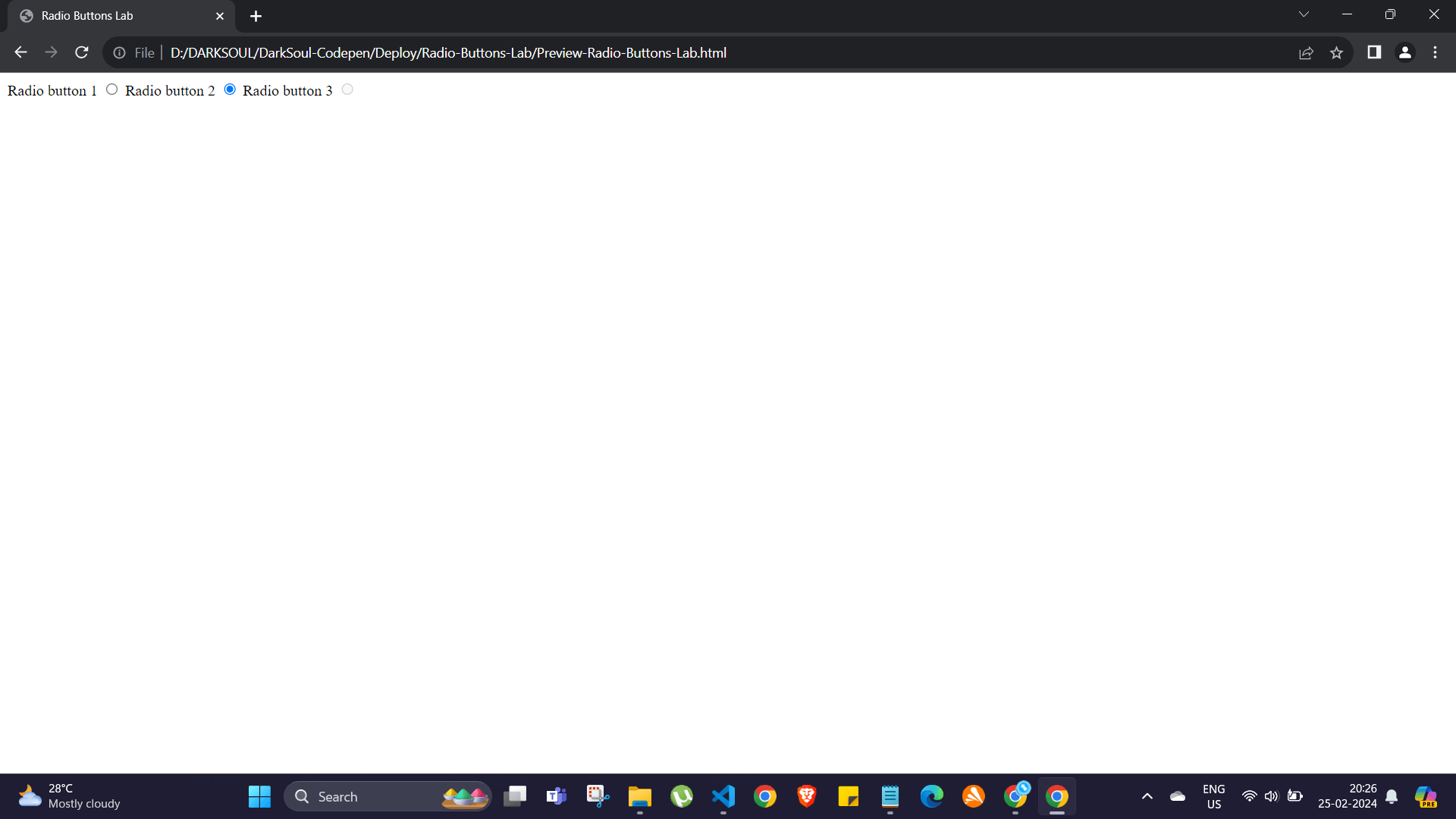Procedure
Step 1: Creating Radio Buttons
Within your HTML file, locate the body section and add a div element with an id of 'wrapper'. This div will encapsulate your radio buttons. Inside the 'wrapper' div, insert a form element to house your radio buttons. Create three radio buttons by adding input elements with a type="radio" attribute and a name="group" attribute. Each radio button should have a unique id attribute for identification purposes. Provide labels for each radio button to indicate their purpose.
Step 2: Setting Default and Disabled States
To set a default selection, add the checked attribute to one of the radio buttons. Additionally, to make a radio button disabled, include the disabled attribute in its corresponding input tag.
Step 3: Styling (Optional)
For visual appeal, you can customize the appearance of your radio buttons using CSS. Target the radio buttons using their ids or the input[type="radio"] selector. You can modify properties such as color, size, and alignment to match your design preferences.
Note: Ensure proper nesting of elements and attribute values to maintain HTML validity. Testing your radio buttons in various browsers is recommended to ensure compatibility and functionality.
Html
Css
Js
Explanation
In summary, the provided HTML creates a webpage with radio buttons grouped together. Each radio button is labeled and corresponds to a specific option. One radio button is pre-selected by default, while another is disabled.
